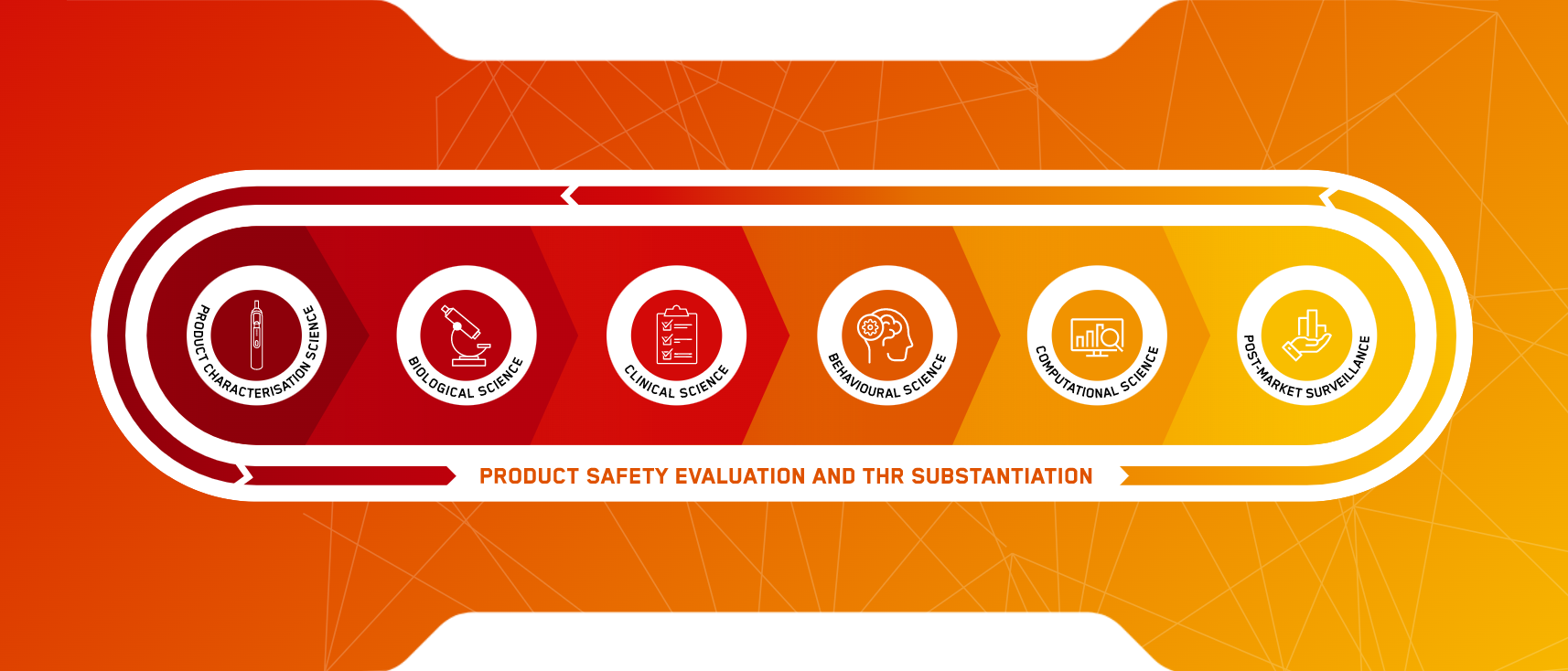Please introduce yourself. What’s your name, your background and your current role at Imperial Brands?
Hi, my name is Liz Mason, Senior NGP Science Manager. My academic background is in biochemistry and, while I’ve had a range of science-driven roles during my time with the business, my current remit is helping ensure we meet the scientific and regulatory requirements to ensure successful next generation product (NGP) market launches.
Why are clinical studies an important part of our Scientific Assessment Framework?
Clinical studies allow us to take the learnings from our biological studies and continue that research in fully informed human subjects. This ensures that we can demonstrate a thorough understanding of our Next Generation Products (NGP) in the eyes of both regulators and consumers.
Why is it so important to test our NGP on actual adult smokers?
In short, because this is our intended audience. There’s no desire to introduce new populations of tobacco and nicotine users, however; for those uninterested and unwilling to quit smoking cigarettes, we want to offer credible and potentially reduced risk alternatives to smoking through our NGP.
What are biomarkers of exposure, and why are they important in some clinical studies?
Biological markers are measurable in the body and allow us to quantify the extent of user exposure to smoking-related chemicals. The US regulator for tobacco and nicotine products, the FDA, has identified a set of 93 harmful and potentially harmful constituents in cigarette smoke, also known as HPHCs.
In our clinical studies we ask people to switch from smoking to a NGP and then look at whether these levels of exposure to HPHCs are reduced (which they often are).
Tell us more about the Pharmacokinetic (PK) elements of clinical studies?
PK studies are commonly used in drug development research into pharmaceutical products. We use PK studies to help us understand how our NGPs deliver nicotine to the body. By taking blood samples at fixed timepoints after using NGP, we can determine the speed of delivery, maximum concentration, and total exposure of nicotine to the consumer – all of which are key factors in understanding consumer satisfaction.
What about Pharmacodynamic (PD) elements?
Whereas PK shows us what the nicotine does to the body, Pharmacodynamics helps us understand what the body does to the nicotine. We assess PD by asking participants to answer questions at key timepoints after using NGP; for example, to assess how far a user’s urge to smoke a cigarette is reduced.
We also ask subjects to evaluate our products throughout their time using them, including questions related to satisfaction, reward and relief to name a few – and when you look at those alongside the PK data, it gives you fantastic insight into the consumer NGP experience.
What about product risk?
The risks of smoking are well documented. In our clinical studies we collect data to help us understand whether our NGP can be tolerated by consumers. We also take some standard risk measures, including subjects’ heart rates. All our risk data is independently assessed by qualified medical teams.
What are puffing behaviours, and why are they potentially important?
Puffing behaviours, also known as puff topography, provide us with valuable insights into how consumers use our NGP. For example, the puffing behaviour of a vaper is likely to be very different to that of a smoker. In our clinical studies we collect data to help us understand the frequency of puff, intervals between puffs, duration and depth of puff amongst other parameters.
When you look at puff behaviour data alongside the PK and questionnaire data, you can really start to think about how NGP usage impacts nicotine delivery and those important questionnaire outcomes related to user satisfaction.
Tell us about some of the most important findings from our NGP clinical studies to-date…
As a tobacco harm reductionist and somebody who cares about the public health impact of these products, the most important and exciting findings are always those which demonstrate the reduced risk potential of our NGP.
In 2020 we ran an extensive clinical programme focusing on our vape proposition – myblu – in smokers and dual users, that showed significant reductions in exposure to smoking related toxicants. There is more work to be done to understand the longer-term potential health impact of these products from a harm reduction perspective, but over the short and medium term – up to 56 days of research – the results were very positive.
Why do we sometimes include dual use arms in our clinical studies?
It’s important to consider all groups of tobacco and nicotine users in our clinical studies and we accept that some people are unwilling to quit cigarettes completely. By conducting clinical studies on those who choose to dual use cigarettes and NGP, we aim to demonstrate that there is still potential for reduced exposure to the harmful constituents in cigarettes, where NGP use also leads to a reduction in cigarettes smoked.
By showing reductions in cigarette use as people transition to dual using with NGP, we also hope to show the potential of NGP in supporting smoking cessation attempts.
What do we do with the data generated by our clinical studies; how do they plug into the SAF?
Clinical data feeds into many different areas of the business. Perhaps most importantly, our clinical data is provided to regulators in support of our market access submissions. More and more countries are requesting clinical data to support their decision making on these products.
Internally, our product development and innovation teams both understand the importance of clinical data in improving our products. The SAF provides us with a framework that ensures we rigorously consider and commit to scientifically understanding our products.
Why is the peer-review process and publishing in academic journals important?
For research to be accepted within peer-reviewed academic publications, the work must, among other things, be scientifically robust, i.e., conducted to best scientific practices with strong experimental design, contain sufficient methodological detail, and have a clear impact to the field and beyond.
This is a process via which we continue to publish our research, which I believe highlights the rigour, quality and impact of Imperial’s NGP science.
Can you tell us anything about any upcoming clinical studies?
Watch this space for new clinical data on our new heated tobacco product Pulze 2.0!
More broadly, the great news is that the company is committed to further building our scientific understanding of NGP. There are many areas to explore within clinical research; human studies to explore category claims; as well as novel and exploratory studies on the impact of tobacco and nicotine on the body.
Focusing on the growing regulatory scrutiny put upon NGP, nicotine PK and biomarker studies will also likely always be needed to ensure our products find a route to, and stay on, the market.
What’s your take on Tobacco Harm Reduction (THR)?
I absolutely believe in THR; I think it’s a crucial fight. I think it’s about giving adult smoker consumers optionality. I don’t think we should expect smokers to take a hard stop when it comes to quitting smoking. I think there’s a journey that they need to take, and I believe NGP have the potential to play a key role in that journey.

You are free to share this content with credit to Imperial Brands under a Creative Commons Attribution-NoDerivatives 4.0 International (CC BY-ND 4.0) license.
